Cover Story
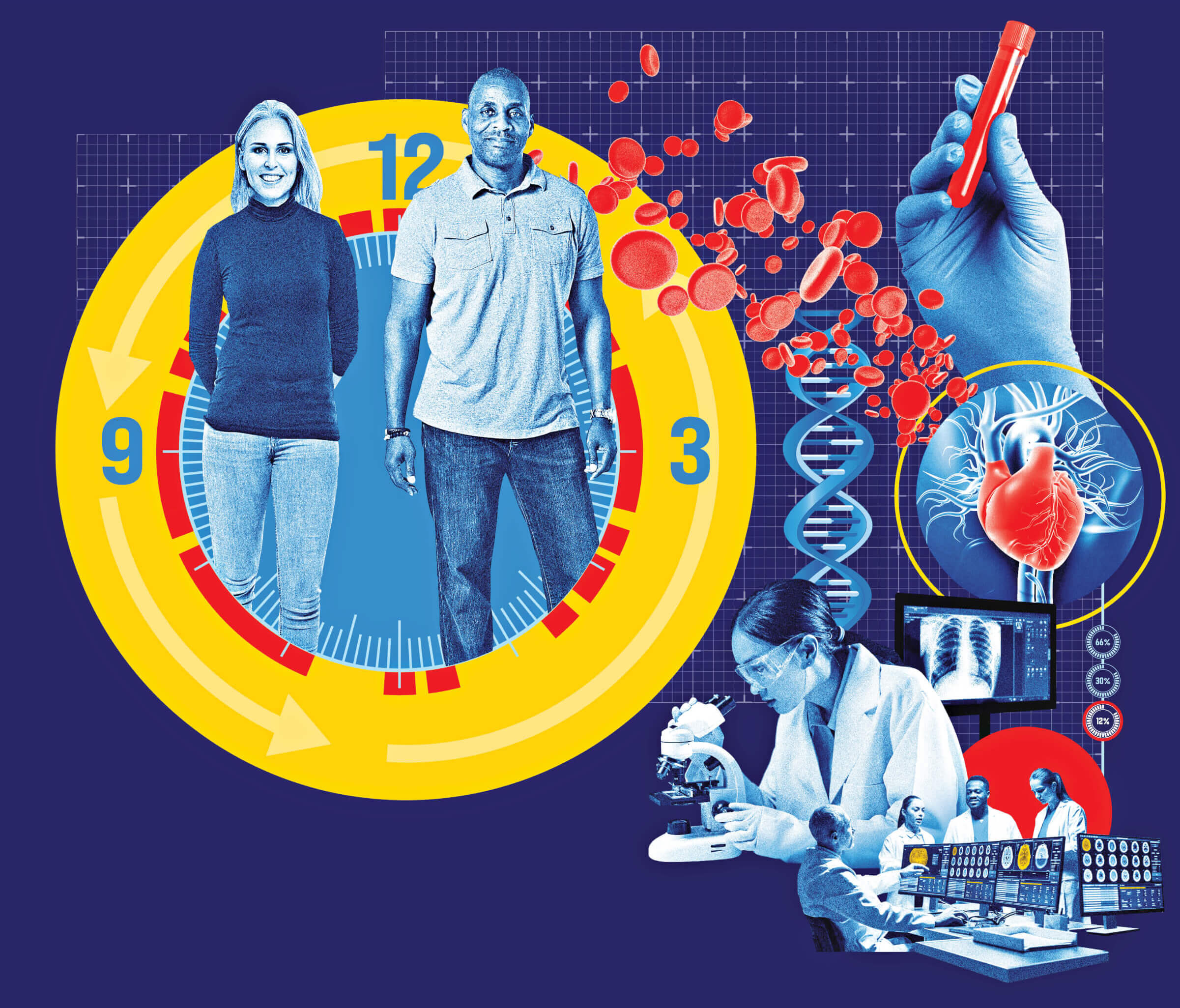
THE FUTURE OF AGING
We may be just a few years—perhaps even a few months—from medical breakthroughs that will change the way time impacts our bodies, our minds and our lives.
“Would you want to live to 200?”
—Tony Wyss-Coray, neuroscientist
The question sounds hypothetical. But thanks to a handful of scientific breakthroughs that have emerged in just the past two years, it might not be.
In 2023, Wyss-Coray and his team at Stanford University were able to calculate the rate of aging of 11 major organs, using proteins in the blood known as biomarkers. And this past July, researchers in Sweden announced they’d found that a simple blood test could detect Alzheimer’s disease with about 90 percent accuracy.
These discoveries have helped to create a new foundation upon which researchers can build, with the promise of detecting, treating and even halting emerging diseases—think heart disease, cognitive decline and many forms of cancer—before they have a chance to make us ill.
A mind-boggling tsunami of research is suddenly emerging from universities all over the world. In labs, old, frail mice that share blood with younger mice become healthier, stronger, and live longer. Researchers believe this technology could one day be applied to humans. Such advances, which not too long ago were the domain of sci-fi novels and superhero movies, are now within sight.
THE PROMISE OF A LONGER LIFE BEGINS BY GROWING THE ‘HEALTH SPAN’
Today, the maximum human lifespan is estimated at somewhere between 115 and 120 years. (Frenchwoman Jeanne Calment, believed to be the oldest person who ever lived, died in 1997 at 122.) But researchers who study aging are no longer just focused on longevity. Instead, the end game is long life without many of the diseases that are associated with aging—not lifespan, but health span.
“We’re not looking to have people live forever,” says Thomas Rando, director of the UCLA Broad Stem Cell Research Center in Los Angeles. “We’re looking to have them lead healthy lives for as long as they live. That’s the dream.”
About 1 in 5 otherwise healthy adults 50 or older have at least one organ aging at a very accelerated rate.
In their quest to improve health span, more researchers are studying the field of “super agers”—people over 80 whose memory is at least as good as those in their 50s and 60s. What separates these late-life high achievers from the average population? And how can the rest of us catch up?
“On average, individuals experience cognitive decline with each successive decade from our 30s and 40s onward,” says neuroscientist Emily Rogalski, director of the University of Chicago Healthy Aging & Alzheimer’s Research Care (HAARC) Center, who first defined the term super ager. “Identifying key factors that allow for youthful memory holds promise for helping others extend their health span and avoid Alzheimer’s and related dementias.”
Indeed, the biggest risk factor for chronic diseases such as heart disease, Alzheimer’s disease, type 2 diabetes, cancers, osteoarthritis—even hearing loss—is simply getting older. If we can slow the rate of aging, we can also delay, and perhaps prevent, the onset of disease, allowing people to live longer and healthier.
“We’ve identified some dials we can tweak that allow us to change the rate of aging,” says Eric Verdin, president of the Buck Institute for Research on Aging.
“The hypothesis is not fully proven yet, but the evidence is pretty strong,” he says. “The aging field is transforming medicine.”
This new way of looking at disease has triggered a tectonic shift in the science of aging, a field of research referred to by a different name: geroscience. The goal of geroscience is to extend physical health and cognition and make being a super ager the rule, rather than the exception.
THE COMING CRISIS OF AN AGING POPULATION, AND WHY WE MUST KEEP OURSELVES HEALTHY
Preserving the health of people in their 80s, 90s and beyond is a critical challenge facing the U.S. Over the next 30 years, the number of centenarians in this country is projected to quadruple to roughly 422,000 by 2054, according to the U.S. Census Bureau, while the population of people over 65 may reach 82 million in the next 25 years.
“At least half of these individuals over 65 will have two or more diseases; a quarter of them will have three or more diseases by age 70,” says biochemist Laura Niedernhofer, director of the Institute on the Biology of Aging & Metabolism at the University of Minnesota. “We need a radical new approach.”
Some researchers believe the era of that radical new approach has already dawned.
In the not-too-distant future, your doctor will be able to use antiaging supplements and drugs to “treat” aging overall, delaying the onset of age-related diseases. Advances in screening technology, together with targeted therapies, may usher in “a new era in the detection and treatment of cancer,” says Ronald DePinho, cancer biologist and the Harry Graves Burkhart III distinguished university chair and past president of the University of Texas MD Anderson Cancer Center.
In 10 years, for example, if you or a loved one is diagnosed with pancreatic cancer—which today has a five-year survival rate of just 13 percent—a combination of targeted therapy, immunotherapy drugs activating the immune system, and a personalized mRNA vaccine (which triggers a cancer-specific immune response) could lead to “doubling or tripling five-year survival,” DePinho says. In 20 years, minimally invasive image-guided surgeries, followed by personalized vaccines after surgery, will help prevent recurrence of early-stage cancers. (For a timeline of upcoming breakthroughs, see below.)
In the coming decades, a hip fracture—which currently results in death in 21 percent of people 60 and older within a year after a fall—will be transformed from a potential tragedy into a temporary setback: Stem cell therapy, which may be delivered in a special infusion center, will allow older people to regrow bone mass, enabling them to return to full function and health, UCLA’s Rando says.
Your annual checkup will most likely be a lot different as well. Beyond basics such as glucose levels and triglycerides, the checkup of the future may consist of testing thousands of biomarkers—molecules found in your blood and other body fluids or tissues that can reveal potential or emerging diseases before they pose a threat.
Although biomarker-guided therapies have been used to treat cancer for decades, scientists are identifying biomarkers of aging that will help predict dementia, liver disease, osteoporosis and other diseases, allowing for earlier and more accurate interventions before disease sets in.
Some scientists, such as Harvard geneticist and longevity researcher David Sinclair, believe that aging can even be reversed. Here’s the theory: Day by day, year by year, our DNA replicates itself as we discard old cells and grow new ones. But like a copier running low on ink, the duplication gets less and less accurate, and genetic information is lost. That’s what creates aging.
What would happen if we could prevent that information loss?
Last year, in a paper published in Cell, Sinclair and his team made the case that a backup copy of the genetic instructions stored on the body’s “hard drive” could be rebooted, essentially reversing the damage done by aging. Though his experiments are primarily in the animal testing phase, Sinclair says he will start a trial next year to test this theory, with the specific goal of reversing blindness in humans.
WHY DIFFERENT BODY PARTS AGE AT DIFFERENT RATES, AND HOW MEDICINE CAN RESPOND
You need only look around at your circle of friends to realize that the passing of time affects everyone differently; one 70-year-old may look 60ish (hopefully that’s you) while another looks fully their age and more. Each person has what’s called a “biological age,” which is the measure of the health of their tissues and organs. Your biological age may be lower or higher than the number of birthdays you’ve had.
“Everyone ages differently due to genetics, lived experiences and family history,” says Miranda Orr, a neuroscientist specializing in Alzheimer’s disease and brain aging at Wake Forest University School of Medicine and the Salisbury VA Medical Center in North Carolina. Even different parts of our bodies age at different rates, which is why an otherwise healthy person can be blindsided by an unexpected disease that targets one specific organ—kidney failure, for example, or prostate cancer.
“We are a collection of organs, and not everyone’s organs are aging at the same rate,” says Wyss-Coray, the D.H. Chen distinguished professor of neurology and neurological sciences at Stanford University. In his groundbreaking study last year, Wyss-Coray not only demonstrated that researchers could use biomarkers to identify how each organ is aging, but was able to show the consequences of those findings: An organ that was aging faster carried a 15 to 50 percent higher risk for mortality in the following 15 years. One in 5 healthy adults 50 and older have at least one organ that is aging too fast, the study found.
Since identifying what they call the “hallmarks of aging”—the molecular, cellular and systemic processes that our bodies undergo as we grow older—geroscientists like Wyss-Coray can define the specific ways in which each individual ages. Once your unique hallmarks are established, doctors will be able to tailor drug regimens and combination therapies to treat your specific aging profile, rather than giving you the same type of treatment as everyone else.
And that opens up a wide world of opportunities to detect, treat and reverse disease.
The code to your specific aging profile is found within a series of these biomarkers—molecules within the body that offer clues to one’s health. Triglycerides, A1C and prostate-specific antigens (PSA) are common examples of biomarkers. But researchers can now use blood, skin or saliva samples to analyze specific patterns in DNA, called methylation marks, that give a more detailed look at the biological age of various body parts. If DNA from a certain area of the body shows signs of greater wear and tear, doctors may be able to administer treatments to give that area a helping hand—bringing its biological age back in line with the rest of the body before a disease can take hold.
“If you can monitor the relative age of an organ on an ongoing basis and see, for example, that the lung of a 60-year-old is aging like that of a 65-year-old, you can do an intervention to bring it back to its normal age,” says Wyss-Coray, who predicts that the Food and Drug Administration (FDA) will approve tests for use in humans specifically designed to measure organ aging within the next five to 10 years.
HOW EARLY DETECTION MAY MAKE ALZHEIMER’S TREATABLE AT LAST
For nearly 7 million Americans who have Alzheimer’s disease and millions of others whose family histories point to a strong proclivity for the disease, the challenges of diagnosis remain considerable. “The problem is we don’t understand the intrinsic mechanisms of the disease yet, so we don’t have highly effective interventions, and we don’t have enough knowledge about Alzheimer’s to cure it,” says Luigi Ferrucci, scientific director of the National Institute on Aging (NIA). But as with other parts of the body, early detection and intervention will probably be the key to effectively treating diseases of the brain. (The only two FDA-approved treatments currently available to slow progression of Alzheimer’s, the anti-amyloid drugs lecanemab and donanemab, have to be administered in the early stages of the disease.)
Until now, the diagnosis of Alzheimer’s has been made through PET scans and spinal taps—expensive procedures often inaccessible to people who live in rural areas or who lack insurance or money for pricey diagnostics. That’s why the announcement this past summer by the group of researchers at Lund University in Sweden of the blood test that can accurately diagnose Alzheimer’s in routine health care settings is a game changer.
Rhoda Au, a professor of anatomy and neurobiology at the Boston University Chobanian & Avedisian School of Medicine, is experimenting with voice-based digital markers as a diagnostic tool for Alzheimer’s disease. Traditional cognitive testing for neurodegenerative illnesses can be time-consuming and inaccurate. Using voice-based digital markers, Au has found that people with cognitive impairment often have detectable acoustic features such as hesitation and stuttering that indicate disease much sooner than other diagnostic tools.
“The idea is to pick up that something is amiss early, then figure out why,” Au says. “If you’re experiencing a neurodegenerative process, it’s not acute but gradual. The longer you can delay the progression or onset of symptoms, the longer you can delay significant consequences of this disease. The goal is to live to end of life cognitively intact.”
As early diagnostic techniques improve, so do treatment options. Drugs that reduce inflammation in the brain are in clinical trials. The anti-amyloid drugs currently available only slow the disease by about 30 percent, says Howard Fillit, cofounder and chief science officer of the Alzheimer’s Drug Discovery Foundation, “so we clearly need drugs with other mechanisms to be used in combination with anti-amyloid drugs to slow the disease down further.” The goal is to slow the disease by 100 percent, he says. “Drugs reducing inflammation in Alzheimer’s disease could achieve this goal, at least in part.”
DePinho’s team at MD Anderson recently identified a molecule that reduces age-related inflammation and improves brain and muscle function in mice. This could have enormous therapeutic implications for diseases such as Alzheimer’s and Parkinson’s, as well as heart disease and various forms of cancer.
THE MEDICINES THAT ‘CURE’ AGING MAY ALREADY BE ON YOUR DRUGSTORE SHELVES
Although there are no antiaging drugs approved by the FDA—in part because the FDA doesn’t recognize aging as a disease—at least a dozen drugs that have been approved for other purposes are strong contenders for use as antiaging agents, says Nir Barzilai, president of the Academy for Health & Lifespan Research, whose research focuses on repurposing drugs to fight aging in new ways. These drugs target the hallmarks of aging and have protective mechanisms that work on the whole system to tamp down inflammation. Dozens of drugs are in clinical trials in humans.
Some of these medications, such as the diabetes drug metformin, the immunosuppressant rapamycin and ACE inhibitors that treat high blood pressure, have been around for decades. They’re relatively inexpensive and have a long safety record. Researchers are starting to test these drugs and supplements in clinical trials in hopes that, if they work, the FDA will approve them as antiaging drugs.
Rapamycin, which has long been used to reduce organ rejection in transplant patients, is being studied for use on periodontal disease, a chronic inflammatory condition of the gums that affects many people over 65 and is associated with dementia and heart disease. And metformin has captured the interest of the FDA, which is advising on a study of metformin being launched by the American Federation for Aging Research (AFAR).
The end game is a long life without the diseases of aging—not just lifespan but “health span.”
“We’re making progress, but nothing is out there yet,” Barzilai says. “We need to start using these drugs.”
Another set of drugs in clinical testing targets senescent (or “zombie”) cells. As we get older, the cells in our bodies lose their ability to divide and replicate—the key to life. These zombie cells accumulate in tissues throughout the body and release harmful substances. As the immune system responds to the zombie cells, it further fuels low-level, chronic inflammation that accelerates cellular damage, erodes muscle strength and weakens immune function—a process known as inflammaging.
Drugs are being tested that can target and eliminate zombie cells while sparing healthy cells; several have recently moved into early-stage human trials. A combination of the cancer drug dasatinib and quercetin, a naturally occurring nutrient in fruits and vegetables, has been found to reduce inflammation and improve metabolic function in old mice.
“Think of aging as being in an oven,” DePinho says, “You’re slowly getting cooked over time. But you can turn the heat down and let something cook longer.”
WHAT TO DO TODAY TO GET READY FOR THE COMING REVOLUTION IN AGING
The stunning advances coming in human aging—perhaps shaping your old age—make the best case for preparing now by following lifestyle choices that research has proven will maximize your chance of a healthy old age—and even extend longevity.
“It’s never too late,” Verdin says. “Twenty years from now, an 80-year-old who had followed the best practices for good health—and once things are discovered and approved by FDA—is likely to be 10 years younger physiologically.”
In 2015, the Finnish Geriatric Intervention Study to Prevent Cognitive Impairment and Disability (FINGER) trial demonstrated for the first time that a group of lifestyle interventions can improve brain health and prevent cognitive decline. Researchers followed 1,260 older adults (60 to 77 years old) over a two-year period to investigate the link between lifestyle choices and cognitive health. They found a 25 percent greater improvement in cognition among people who adhered to healthy lifestyle behaviors than among those in the control group who received general health advice.
The five “fingers” in the study are associated with cognitive health, and researchers generally agree on the lifestyle practices that maximize healthy aging:
▶︎ Exercise. Studies have shown that 30 minutes of exercise a day can help control weight, boost energy, enhance cognitive function and promote better sleep. Even 15 minutes a day is useful. “If you exercise even a little, it will expand your health expectancy,” says the NIA’s Ferrucci.
▶︎ Healthy eating. Although there is no single diet that is conclusively proven to slow aging, many experts recommend a Mediterranean plant-based diet that is rich in fruit and vegetables, whole grains, legumes, fish and nuts. Minimal intake of processed foods, sugar, alcohol and red meat is also recommended. The Mediterranean diet has been proven to be effective in reducing cardiovascular disease and risk factors such as high cholesterol, high blood pressure, glucose levels and inflammatory markers, all of which are associated with cognitive decline. A 2022 study published in The American Journal of Clinical Nutrition found that a Mediterranean-style diet was associated with slower age-related brain atrophy.
▶︎ Cognitive engagement. According to neuroscientist Rogalski, numerous kinds of mental activities can help maintain general cognitive function and brain health. These may include learning a new language, playing strategy games such as chess or checkers, or working through difficult puzzles. The key is to choose activities that are mentally challenging.
▶︎ Social activity. Interact with friends and family in activities. It can boost your cognition and is emotionally fulfilling. A 2017 study by Rogalski’s team, published in PLOS One, found that super agers who engaged in more social relations and relationships had better memory scores than older adults who did not engage.
▶︎ Cardiovascular health. Stay on top of your blood pressure and cholesterol. Statins, which have been prescribed for decades, are among the most effective antiaging drugs already on the market. (They are also anti-inflammatory.) Medications to lower high blood pressure, which is a primary marker of health, are also widely available.
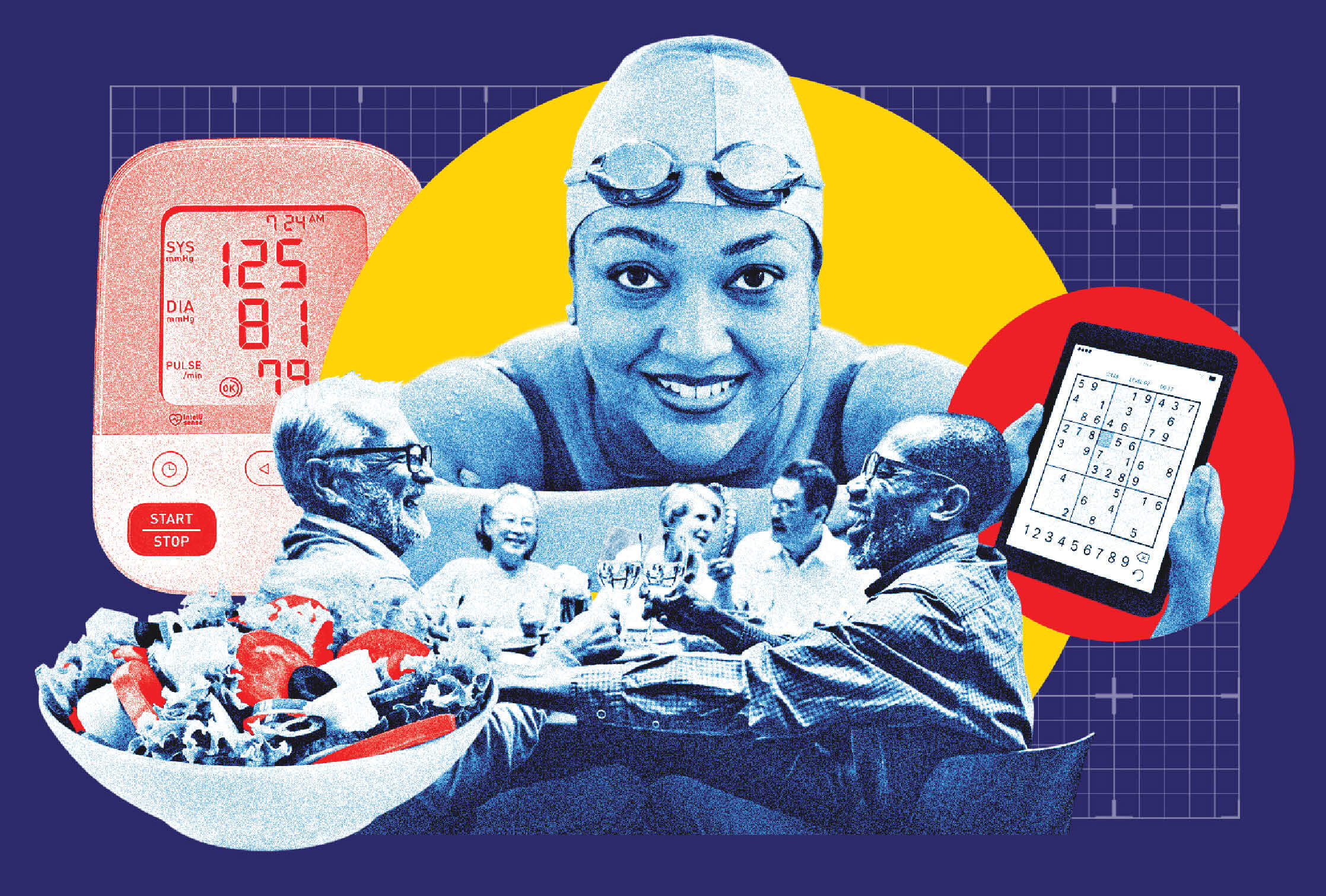
Be sure to have regular exams that include blood work, a colonoscopy, a mammogram, a prostate check and a routine diabetes check.
Talk to your doctor about supplements such as vitamin D, calcium and B12. Although the internet is abundant in supplements promising all sorts of miracles, don’t take those unless you have discussed it with your doctor.
“If we could expand the good life, we can prolong longevity. The problem is that we’re only intervening on disease when disease becomes clinically evident.”
—Luigi Ferrucci, National Institute on Aging
Regular dental appointments are important, too. A recent analysis led by the National Institute on Aging (NIA) found that the bacteria associated with periodontal disease are also associated with the development of Alzheimer’s and related dementias, especially vascular dementia.
“If we intervene in the first part of life, we may not be able to eliminate disease, but maybe we can compress it closer to the end of life,” Ferrucci says. “Most older people are not afraid of dying, they’re more afraid of becoming disabled and dependent on others. If we could expand the good life, we can prolong longevity. The problem is that we’re only intervening on disease when disease becomes clinically evident.”
Geroscientists stress that these kinds of advancements in health span are more important than holding out hope that we’ll eventually be able to live to 200. But living to 100, in excellent health, seems to be a commonly attainable goal in the not-too-distant-future.
In September 2000, two researchers made a friendly wager. Biologist Steven Austad predicted that someone alive that year would live to 150. Longevity researcher S. Jay Olshansky challenged him to a bet, arguing that no matter what advances were made in antiaging medicine, no human who was alive in 2000 would still be around in 2150.
Both men invested $150. They’ve since doubled the bet, and with returns, the pot could feasibly exceed $1 billion by 2150. The only question is, whose descendants will reap the rewards?
Olshansky, a professor in the School of Public Health at the University of Illinois at Chicago, remains a skeptic: “I’m more confident today that I will win this bet than when I first made it 24 years ago. There is no evidence to suggest anyone will live past 120, let alone 150.” Austad, who is AFAR’s scientific director, counters, “We have learned since the bet that life-extending drugs (at least in mice) have a substantial longevity boost even when begun as late as 60 years or more. I’m fairly confident that such drugs will be available within 20 years. But even if it takes 30 years, I’m confident that I’ll win.”
And that could add up to an awful lot of candles on our birthday cakes.
Jeanne Dorin McDowell is a former correspondent for Time magazine who has written for The New York Times and other publications.
MY LONGEVITY SECRETS
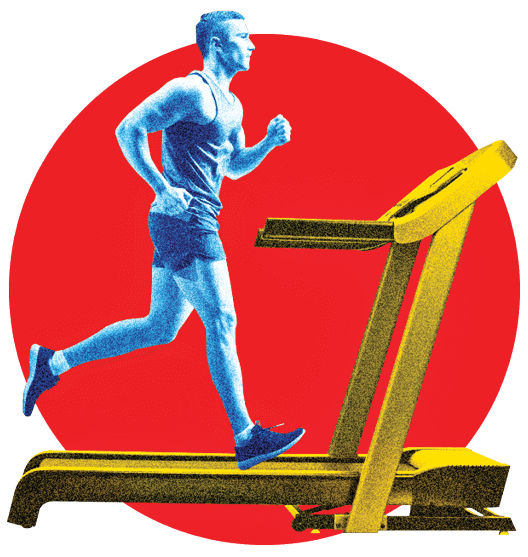
NIR BARZILAI, 68, President of the Academy for Health & Lifespan Research: “I exercise every day for about an hour on the Peloton treadmill and stretch twice a week with a trainer. I’m doing upper-body and lower-body exercise with weights and stretching. For food, my main intervention is intermittent fasting at least 16 hours a day, many times more. I’m trying to do more Mediterranean diet and less carbohydrates. I take 1,500 mg of metformin every day. For sleep, I try to be in a dark room without electronics for at least eight hours and get as much good sleep as I can. For social connectivity, I’m talking to you.”

RONALD DEPINHO, 69, Harry Graves Burkhart III distinguished university chair and past president of the University of Texas MD Anderson Cancer Center: “I consume a balanced diet rich in fish, fruits and vegetables, and take a baby aspirin and 2,000 IU of vitamin D. Avoid processed and red meats; perform daily exercise incorporating cardio (bike, elliptical), balance/coordination (tae kwon do), strength (weight lifting) and flexibility (yoga), averaging a total of eight hours per week. I routinely walk 3 miles each night after dinner. Also, no tobacco; avoid excessive sun; limit alcohol to one glass or less per day.”
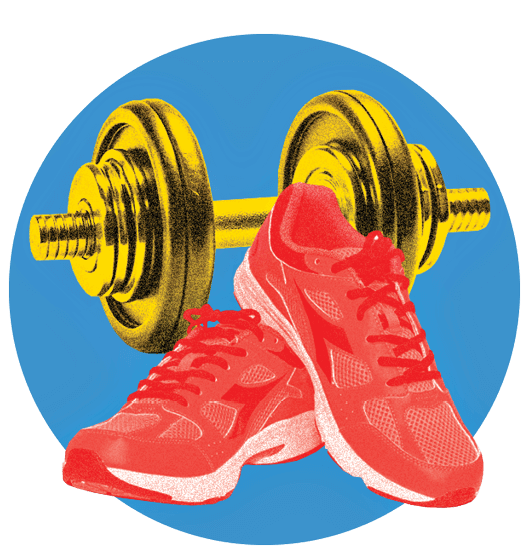
RHODA AU, 63, Professor of anatomy and neurobiology at the Boston University Chobanian & Avedisian School of Medicine: Starting in my early 40s, I’ve been pretty consistent with running. I try to get a minimum of 18 miles per week, coupled with the elliptical machine when the outside weather is bad. I take the stairs whenever possible (airports, hotels, offices). I try to avoid drinking calories, don’t drink alcohol or anything with caffeine, never smoked. Try to keep a low sugar intake. And no recreational drug use, ever.

TONY WYSS-CORAY, 60, D.H. Chen distinguished professor of neurology and neurological sciences at Stanford University: “I enjoy different types of food, exercise and social activities, sleep seven hours a day and tend not to worry too much about things. Most of my meals are freshly prepared and contain fruits, nuts and vegetables, lots of cheese, chocolate, and I love a glass of wine with my meals. I do Pilates exercises a few times a week and try to do a weekly 10K run. I don’t take any supplements or drugs.”
A Perfect Day of Not Aging
AS WE’VE SEEN, EVERY INDIVIDUAL—INDEED, EVERY INDIVIDUAL BODY PART—AGES AT A DISTINCT RATE. BUT THERE ARE THINGS YOU CAN DO THAT MAY SLOW AGING OR, AT THE VERY LEAST, FOSTER HEALTHY AGING. HERE’S WHAT A DAY WITHOUT AGING MIGHT LOOK LIKE. WHO KNOWS—MAYBE YOU’LL WAKE UP TOMORROW THE SAME AGE YOU ARE TODAY!

6–8 a.m.
WAKE UP. Waking up between 6 and 8 a.m. is generally in sync with your body’s circadian rhythm, which is the internal clock that regulates your sleep and wakefulness. The American Academy of Sleep Medicine recommends that you wake up no less than seven (and no more than nine) hours after you went to bed.

7–9 a.m.
MORNING WALK. Be sure to get some sunlight in the morning, which helps your body produce the vitamin D that may slow the aging process. Make a habit of walking the dog or doing light chores outside first thing in the morning, before the demands of the day trap you in your house, car or office.

9–10 a.m.
BREAKFAST. Start with a protein smoothie with mixed fruit. A high-protein breakfast is critical for maintaining muscle mass as we age, according to numerous studies. Research shows that getting 25 to 30 grams of protein in the morning is effective in preventing age-related muscle loss, also known as sarcopenia.

Noon
MEDITATION. Any calming activity, such as yoga or prayer, can help reduce the risk of cognitive decline by activating the prefrontal cortex, an area of the brain that is diminished in those with cognition difficulties. A study in the Journal of Alzheimer’s Disease found that just 12 minutes of meditation daily could make a difference.

1 p.m.
LUNCH. Have a mixed salad with salmon. A Mediterranean-style diet that is abundant in fruits and vegetables and omega-3 rich fish such as salmon can reduce inflammation, a culprit in biological aging, according to a review of studies in the journal Nutrients. Eating a wide array of plant foods boosts the microbiome, the master controller of gut inflammation.

3 p.m.
EXERCISE. Afternoon exercise may reduce the risk of premature death even more than morning or evening workouts, according to a study of more than 90,000 men and women published last year in Nature Communications. Walk briskly for 30 minutes or get some kind of cardio exercise at least five days a week, and use weights on the other two days.

4–6 p.m.
SOCIALIZE. Maintaining social connections is one of the pillars of antiaging, according to several studies. Social isolation in older people can increase the risk for dementia by about 30 percent, according to researchers at Johns Hopkins University School of Medicine and the Bloomberg School of Public Health.

6 p.m.
DINNER. Dine on vegetable tacos with brown rice and beans. Eating during an eight- to 12-hour window of the day and fasting for the remaining 12 to 16 hours (including sleep time) has been shown to have numerous advantages associated with longevity and decreased incidence of disease, including cancers. Lean heavily on vegetables, fruits, nuts, grains and legumes—then close the kitchen until morning.
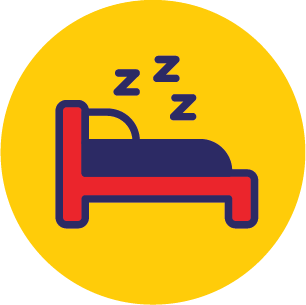
10–11 p.m.
BEDTIME. A U.K. study found that going to bed between 10 and 11 p.m. may reduce heart disease risk, especially in women. Other research indicates that deep sleep, which occurs from the hours of 10 p.m. to 1 a.m., represents the optimal time for the brain to clear out debris and reorganize itself, reducing one’s risk of Alzheimer’s disease.
Aging Breakthroughs: A Timeline
OVER THE NEXT 20 YEARS, CUTTING-EDGE DIAGNOSTICS, DRUGS AND INNOVATIVE TREATMENTS ARE GOING TO TARGET, AND PERHAPS DRAMATICALLY SLOW, HOW WE AGE.
NOW
▶︎ This past July, a blood test emerged that can identify Alzheimer’s disease in older adults with about 90 percent accuracy. Fast, accurate, affordable diagnosis for Alzheimer’s has been a problem. This blood test paves the way for earlier diagnoses and treatments that are most effective in the disease’s early stages, in patients with mild to moderate Alzheimer’s.
IN THE NEXT FEW MONTHS/YEARS
▶︎ Senolytics, a class of drugs that selectively clear senescent (or “zombie”) cells, will be in proof-of-concept human trials.
▶︎ Four drugs (SGLT inhibitors, metformin, bisphosphonates and GLP-1), all FDA-approved to treat specific health conditions, will be used off-label as preventatives for an array of age-related diseases.
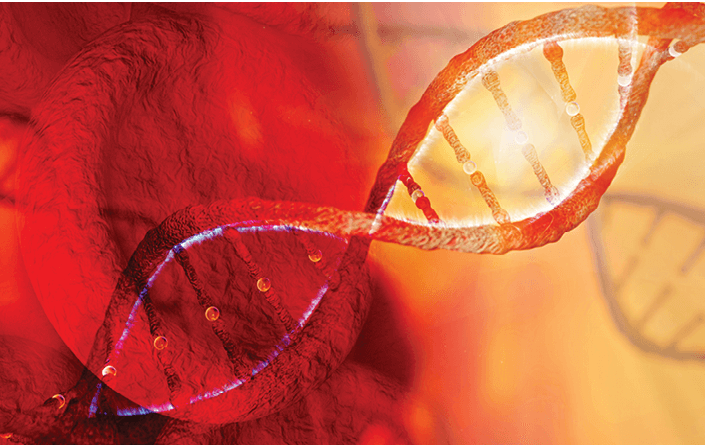
▶︎ Epigenetic “clocks”—cellular profiles that will show a person’s biological age (the health of tissues and organs) relative to chronological age—will become available, which may allow for treatments targeted to areas of the body that are flagging.
IN 5 YEARS
▶︎ Digital voice technology to diagnose Alzheimer’s and cognitive impairment
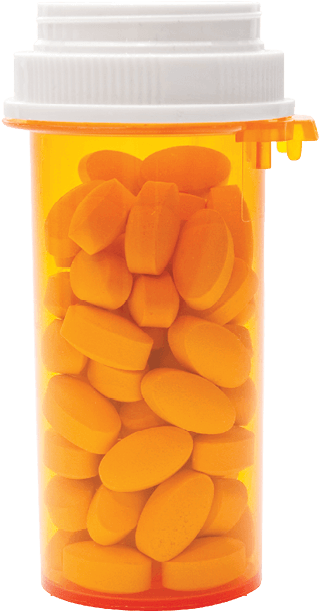
▶︎ Some repurposed drugs capable of changing the rate of aging will be approved and available specifically for use in antiaging medicine. These may include spermidine, rapamycin and metformin.
IN 10 YEARS
▶︎ Identification of biomarkers that will predict how close you are to experiencing cognitive decline
▶︎ Biomarkers that give you a risk prediction for diseases and a time frame for when you are likely to get them
▶︎ Blood tests to detect biomarkers for dementia, cancers, heart disease, osteoporosis and other age-related diseases
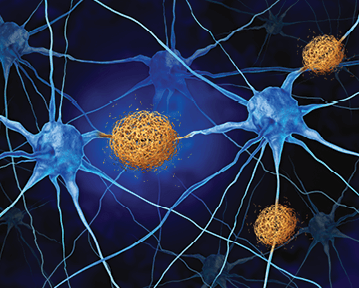
▶︎ Drugs that slow or clear amyloid and tau tangles, as well as other treatments to slow the progression of Alzheimer’s disease
▶︎ Therapies in clinical trials that target multiple aging pathways, such as TERT gene therapy
▶︎ Blood tests that indicate the biological age of major organs
IN 15–20 YEARS
▶︎ Personalized antiaging treatments that use AI and big data to customize antiaging regimens based on an individual’s genetic and environmental factors
▶︎ Neurodegeneration prevention: Breakthroughs in preventing Alzheimer’s or Parkinson’s disease through advanced gene therapies or cellular reprogramming
IN THE FUTURE
▶︎ Drugs that prevent Alzheimer’s disease

▶︎ Advanced organ regeneration: Organoids and 3D-printed organs for transplant and rejuvenation of failing tissues
▶︎ Longer lifespan via emerging geroscience advances will eventually allow us to live beyond current biological limits.